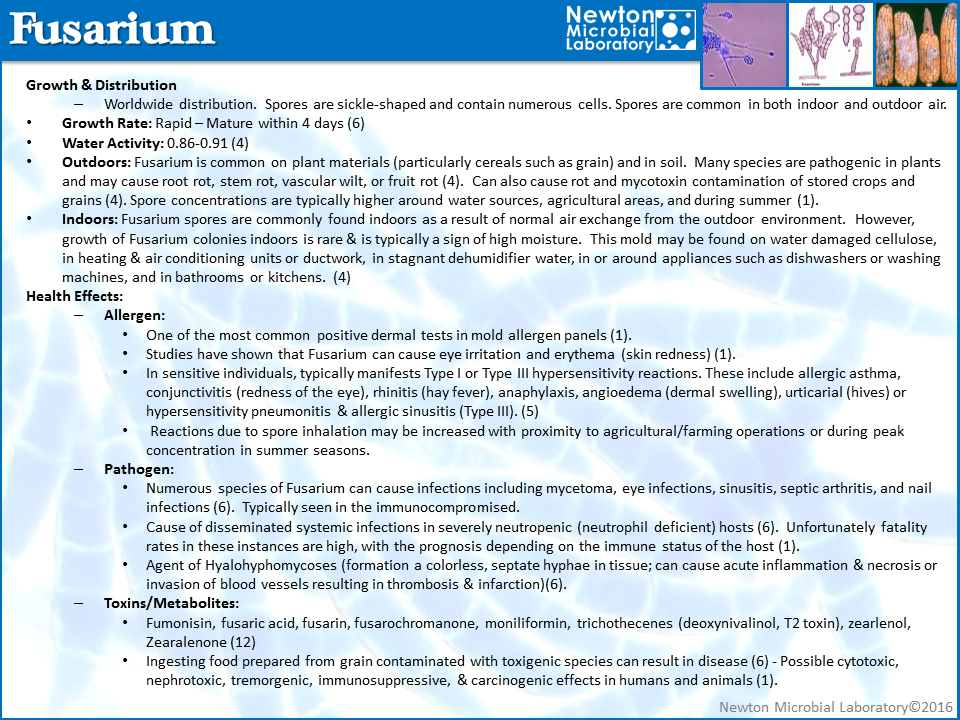Fusarium
Growth & Distribution
Worldwide distribution. Spores are sickle-shaped and contain numerous cells. Spores are common in both indoor and outdoor air.
Growth Rate: Rapid – Mature within 4 days (6)
Water Activity: 0.86-0.91 (4)
Outdoors: Fusarium is common on plant materials (particularly cereals such as grain) and in soil. Many species are pathogenic in plants and may cause root rot, stem rot, vascular wilt, or fruit rot (4). Can also cause rot and mycotoxin contamination of stored crops and grains (4). Spore concentrations are typically higher around water sources, agricultural areas, and during summer (1).
Indoors: Fusarium spores are commonly found indoors as a result of normal air exchange from the outdoor environment. However, growth of Fusarium colonies indoors is rare & is typically a sign of high moisture. This mold may be found on water damaged cellulose, in heating & air conditioning units or ductwork, in stagnant dehumidifier water, in or around appliances such as dishwashers or washing machines, and in bathrooms or kitchens. (4)
Health Effects
Allergen:
One of the most common positive dermal tests in mold allergen panels (1).
Studies have shown that Fusarium can cause eye irritation and erythema (skin redness) (1).
In sensitive individuals, typically manifests Type I or Type III hypersensitivity reactions. These include allergic asthma, conjunctivitis (redness of the eye), rhinitis (hay fever), anaphylaxis, angioedema (dermal swelling), urticarial (hives) or hypersensitivity pneumonitis & allergic sinusitis (Type III). (5)
Reactions due to spore inhalation may be increased with proximity to agricultural/farming operations or during peak concentration in summer seasons.
Pathogen:
Numerous species of Fusarium can cause infections including mycetoma, eye infections, sinusitis, septic arthritis, and nail infections (6). Typically seen in the immunocompromised.
Cause of disseminated systemic infections in severely neutropenic (neutrophil deficient) hosts (6). Unfortunately fatality rates in these instances are high, with the prognosis depending on the immune status of the host (1).
Agent of Hyalohyphomycoses (formation a colorless, septate hyphae in tissue; can cause acute inflammation & necrosis or invasion of blood vessels resulting in thrombosis & infarction)(6).
Toxins/Metabolites:
Fumonisin, fusaric acid, fusarin, fusarochromanone, moniliformin, trichothecenes (deoxynivalinol, T2 toxin), zearlenol, Zearalenone (12)
Ingesting food prepared from grain contaminated with toxigenic species can result in disease (6) – Possible cytotoxic, nephrotoxic, tremorgenic, immunosuppressive, & carcinogenic effects in humans and animals (1).

